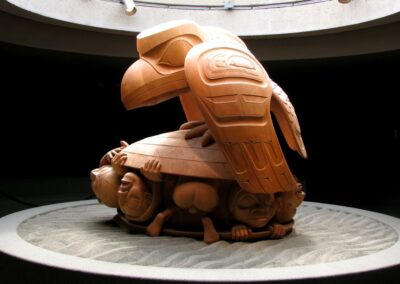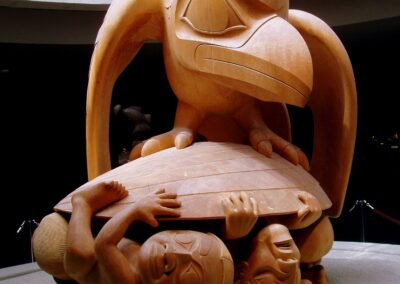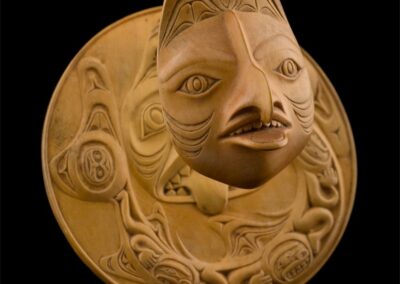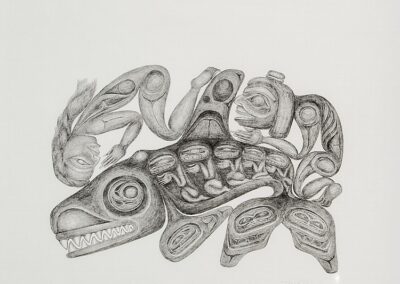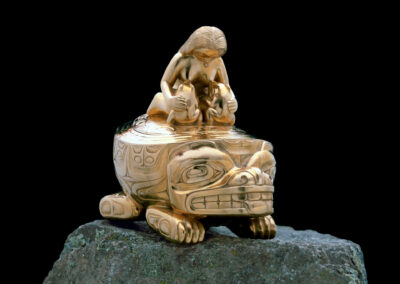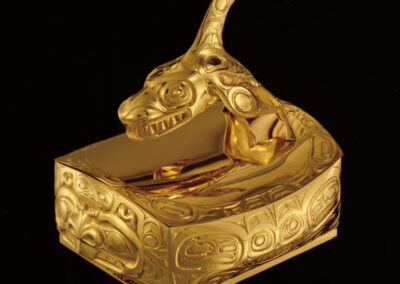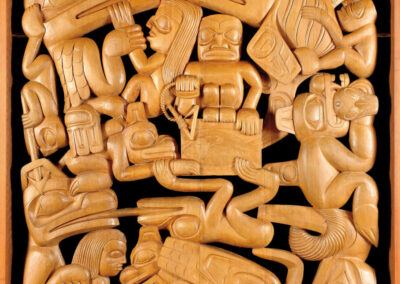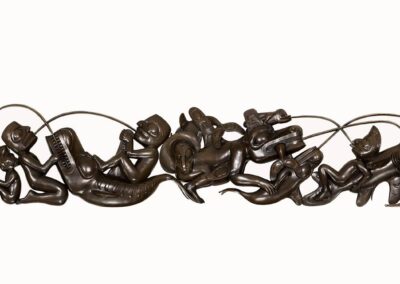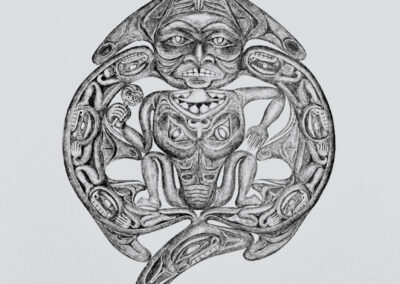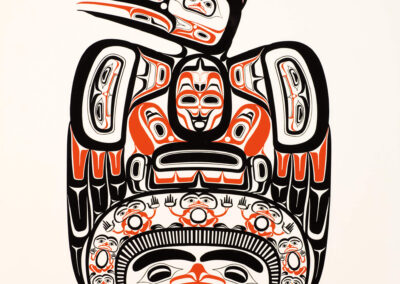Our next Artist You Need to Know is Bill Reid (1920-1998). ‘Reid became a pivotal force in building bridges between Indigenous people and other peoples. Through his mother, he was a member of the Raven clan from T’aanuu with the wolf as one of his family crests. Raven is known as a mischievous trickster, who also plays an important part in transforming the world. Many of these traits matched Bill Reid’s personality. In 1986, Reid was presented with the Haida name Yaahl Sgwansung, meaning The Only Raven.’ (From here)
We’re offering a teaser of Reid’s significant works, but a fine overview of his life and art can be enjoyed in a wonderful publication from the Art Canada Institute, written by Gerald McMaster. That can be found here but we’re offering several excerpts from it: ‘While working as a radio broadcaster for the CBC, he established a highly regarded practice as a jeweller; he later became a sculptor of large-scale public works, all while discovering his Haida heritage through the art of his ancestors. Throughout his fifty-year-long career he was prolific as a maker and thinker, creating more than one thousand original works and writing dozens of texts that gave voice to his vision and the cultural issues of his day. A community activist, mentor, and writer, he is remembered as a passionate artist and an advocate for the “well-made object—equal only to the joy in making it.”‘ You hopefully are familiar with how some of his major works were featured on the Canadian $20 banknote (specifically as part of the Canadian Journey series, 2004–2012).
-

The Raven and the First Men, 1980
-

The Raven and the First Men, 1980
-

The Raven and the First Men, 1980
-

Spirit of Haida Gwaii, The Black Canoe,1986
-

Spirit of Haida Gwaii, 1986
-

Spirit of Haida Gwaii: The Jade Canoe, 1996
Reid is best known for his monumental pieces, but his smaller works, and his prints, also merit attention. The delicacy of these pieces act as a fine contrast to the sheer power of his larger-than-life figures. Whether a smaller work that can held in the palm of your hand, or an installation that can awe the viewer, Reid’s artworks always displayed his clarity of creation, and his aesthetic of joy, and beauty, in art.
-

Dogfish Woman Transformation pendant, 1982
-

Nanasimgit and His Wife, 1983
-

Myth of Bear Mother dish, 1972
-

Killer Whale Box with Beaver and Human, 1971
-

Cedar Screen, 1968
-

Hinged Raven Bracelet, c.1955
More from McMaster’s insightful and considered writing about Bill Redi: “From the age of twenty-three, Bill Reid was on a lifelong journey to learn what it truly meant to be Haida. He was deprived of the fundamental experience of growing up Haida or living in the village of Skidegate during early childhood. Unable to learn the language, he initially struggled to relate to the Skidegate community. While the degree to which he achieved his personal quest for identity remains a topic of critical discussion, his contributions to Northwest Coast art and culture, as well as to environmental and social issues on Haida Gwaii, show his remarkable ability to harness the privilege he had as an outsider. These contributions were significant and should be underscored when discussing his legacy today.”
There are numerous online resources to further explore Bill Reid’s legacy. The Bill Reid Gallery, Simon Fraser University’s extensive digital archive and the Bill Reid Foundation. A brief film about Reid can be seen here, from the NFB (National Film Board) archives. From one of the many radio and television features of Reid, the words of Robert Bringhurst (CBC Stereo Ottawa, 16 March 1998) are still very true, over two decades later: Reid “worked in two quite different cultural traditions and danced back and forth across those boundaries with a skill that was quite astonishing.”

